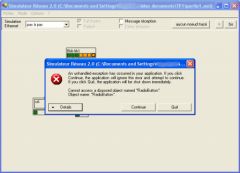Here is a quick setup to configure Postfix mail server, using existing Unix users.
The server will process mails for only one domain, and every existing user on the server will have a mail box inside his home directory.
Abstract
Postfix is an SMTP server, it receives incoming mail from other SMTP servers, and allows client to send mails to other SMTP servers.
What we don't want is an open mail relay. A mail relay is a SMTP server that take anything from any client, and send it to any SMTP server. We only want trusted users to send emails, to prevent anonymous clients from sending spam.
Incoming mail will be processed either if :
- The domain name of one of the recipient matches the mail server domain, and the mail user name is also a system user (SMTP servers can send us incoming mails).
- The client who tries to sends the mail has successfully authenticated.
Postfix authentication for clients can be handled by SASL. SASL is a standard protocol to provide an authentication layer. It can query PAM, or other authentication providers (MySQL users, etc).
Notes :
- We will use PAM for Unix users SMTP authentication.
- Unix users are stored in
/etc/passwdand their passwords are stored in/etc/shadow. - Mails will be stored in the ~/Maildir/ of each users, in Maildir format.
Postfix : installation and configuration
Install Postfix : apt-get install postfix
Answer the questions during installation to setup your mail domain (the "example.com" in user@example.com).
Modify config files :
/etc/postfix/main.cf :
Configure TLS and Maildir :
# TLS parameters
smtpd_tls_key_file = /etc/ssl/private/ssl-cert-snakeoil.key
smtpd_tls_cert_file = /etc/ssl/certs/ssl-cert-snakeoil.pem
smtpd_tls_CAfile = /etc/ssl/certs/ca-certificates.crt
smtpd_use_tls=yes
smtpd_tls_session_cache_database = btree:${data_directory}/smtpd_scache
smtp_tls_session_cache_database = btree:${data_directory}/smtp_scache
# See /usr/share/doc/postfix/TLS_README.gz in the postfix-doc package for
# information on enabling SSL in the smtp client.
myhostname = mail.example.com
alias_maps = hash:/etc/aliases
alias_database = hash:/etc/aliases
myorigin = /etc/mailname
mydestination = example.com, localhost
mynetworks = 127.0.0.0/8 [::ffff:127.0.0.0]/104 [::1]/128
mailbox_size_limit = 0
recipient_delimiter = +
home_mailbox = Maildir/
# These are the "no relay" restrictions
smtpd_recipient_restrictions = permit_mynetworks permit_inet_interfaces permit_sasl_authenticated reject_unauth_destination
/etc/postfix/master.cf :
Enable TLS and alternate (submission) ports :
submission inet n - - - - smtpd
-o syslog_name=postfix/submission
-o smtpd_tls_security_level=encrypt
-o smtpd_sasl_auth_enable=yes
-o smtpd_client_restrictions=permit_sasl_authenticated,reject
-o milter_macro_daemon_name=ORIGINATING
smtps inet n - - - - smtpd
-o syslog_name=postfix/smtps
-o smtpd_tls_wrappermode=yes
-o smtpd_sasl_auth_enable=yes
-o smtpd_client_restrictions=permit_sasl_authenticated,reject
-o milter_macro_daemon_name=ORIGINATING
SASL : installation and configuration
SASL plugin for Postfix (Cyrus) is part of the dependencies of Postfix server.
Install SASL administration tools : apt-get install sasl2-bin
Enable SASL daemon at startup : edit /etc/default/saslauthd and switch START to yes.
Start it manually for the first time : service saslauthd start
Enable PAM authentication for SASL
Check that PAM is part of the MECHANISMS variable in /etc/default/saslauthd :
MECHANISMS="pam"
Create /etc/pam.d/smtp :
#
# /etc/pam.d/smtp - specify PAM SMTP behavior
#
@include common-auth
@include common-account
@include common-password
@include common-session
Enable SASL for Postfix
Add to /etc/postfix/main.cf :
smtpd_sasl_auth_enable = yes
Create /etc/postfix/sasl/smtpd.conf :
pwcheck_method: saslauthd
mech_list: PLAIN LOGIN
Adjust OPTIONS in /etc/default/saslauthd :
OPTIONS="-c -m /var/spool/postfix/var/run/saslauthd"
Add postfix user to sasl group :
adduser postfix sasl
Configuration check
Restart all services (postfix, salsauthd).
Try authentication using SASL : testsaslauthd -u user -p password
Try authentication from command line, without mail client : https://qmail.jms1.net/test-auth.shtml
Try SMTP reception by sending mail to your domain (your MX fields in domain has to be configured accordingly).

